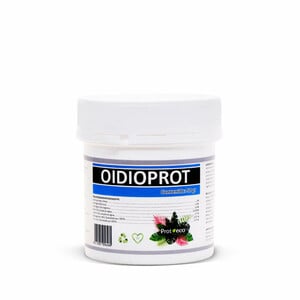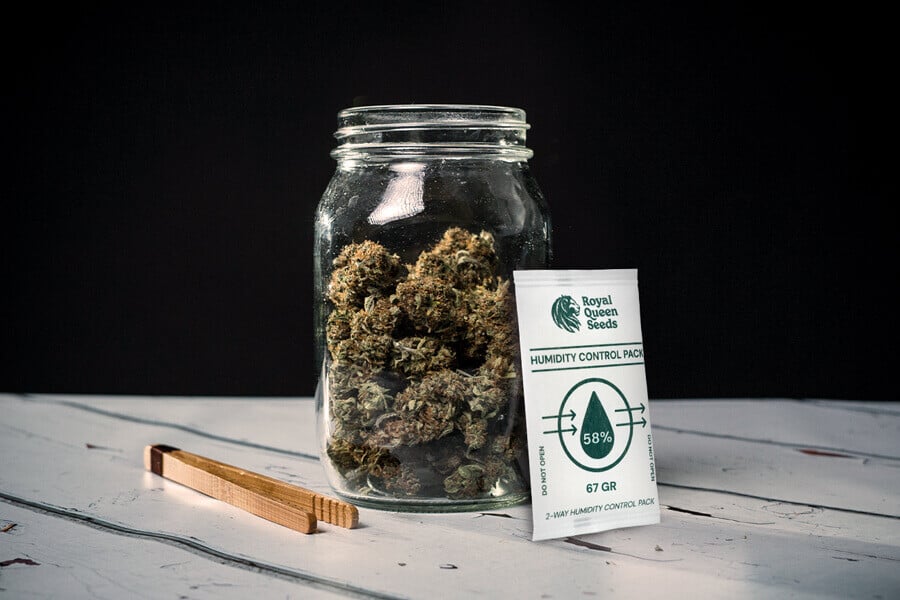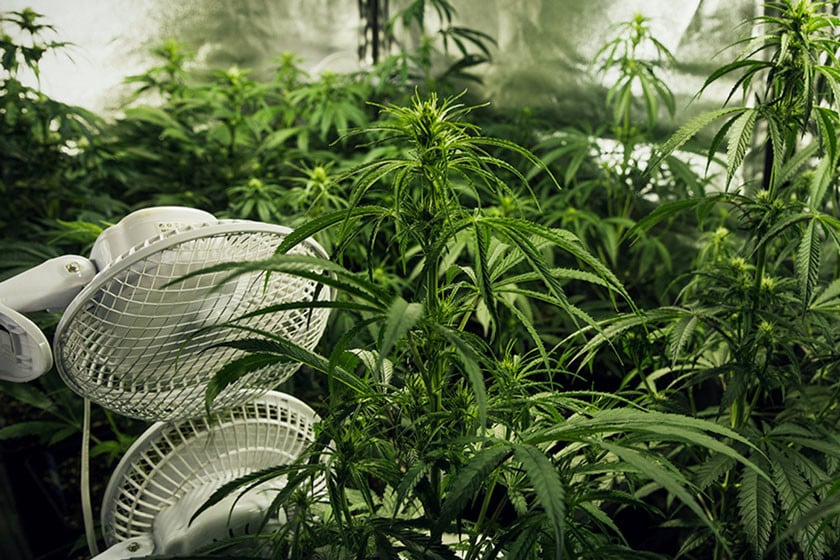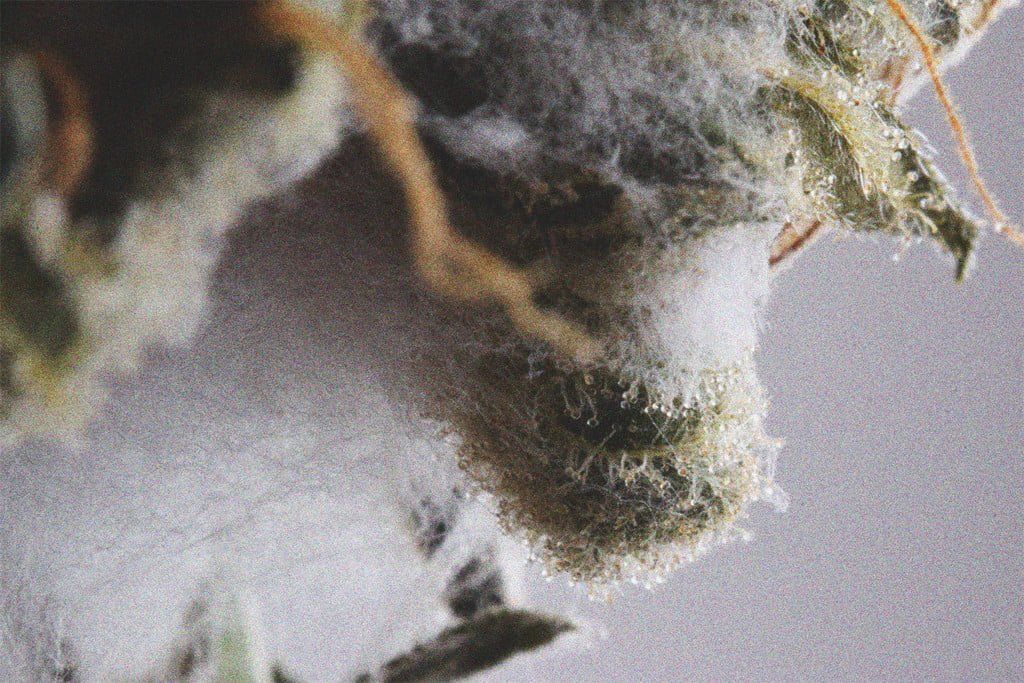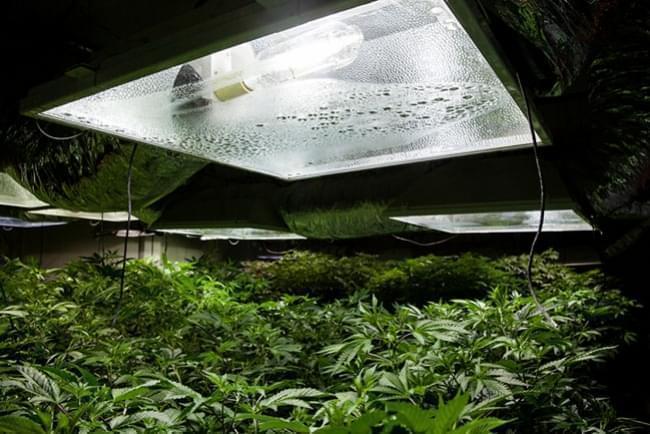.
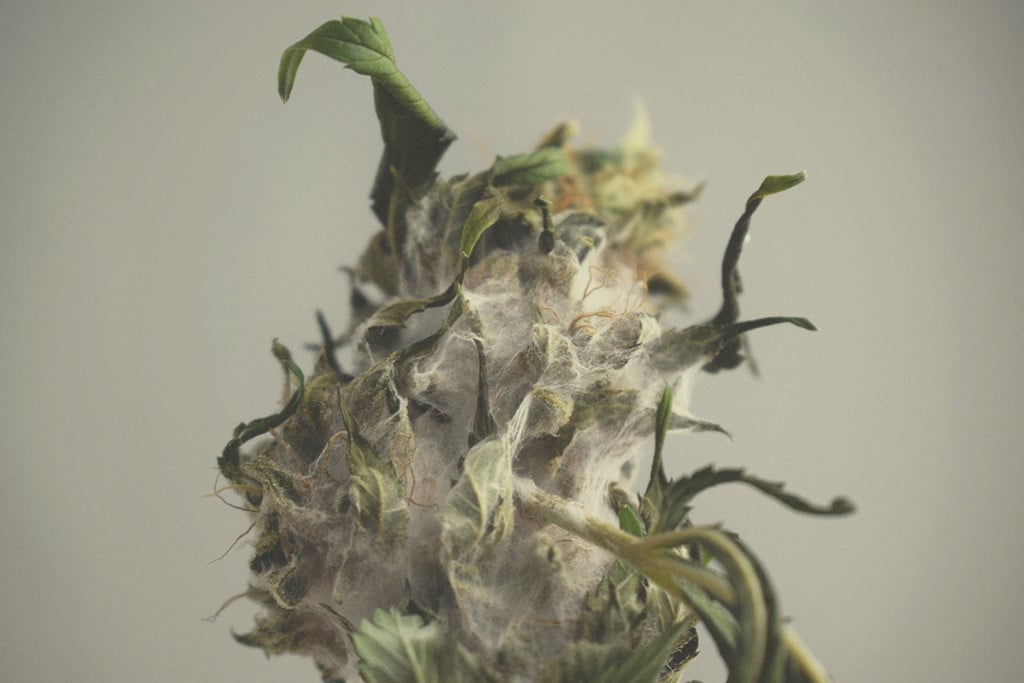
Cannabis Mould: Identification, Prevention, and Treatment
While you’ll hear and see insects and rodents crawling around, they aren't the only living things that like to snack on weed plants. As it turns out, mould, a much smaller, elusive enemy, also likes the taste of cannabis. Let’s go over how you can protect your crops against the most common species of mould, preventing and treating it in turn.
How to spot, treat, and prevent mould from hurting your cannabis plants.
Contents:
Whether you’re growing cannabis or any other crop, mould poses a big threat to both indoor and outdoor growing operations. This initially invisible enemy can quickly gain a foothold in your garden, reduce yields, and even ruin flowers post-harvest. As we go along, we’ll cover exactly what mould is, introduce you to the most common species, show how to prevent it, and cover how to treat your plants if you detect it.
What Is Mould?
The world “mould” probably conjures up bleak images of rot and decay if your mind’s eye. While mould doesn’t look pretty when it devours cannabis plants, it plays one of the most fundamental roles in nature.
A type of fungus, “mould” encompasses a large group of taxonomically diverse species. Much like other fungi, they branch out while forming a multicellular network of small filaments (hyphae), forming a dense mass of fibres known as mycelium.
Moulds don’t possess a digestive system. Instead, they pump out enzymes that break down substances like plant matter and wood on the outside of their bodies. With these traits, they play the role of nature's great decomposers. They break down waste, plant matter, and dead animals into smaller particles, returning them to the soil to continue the circle of life.
Where Mould Comes From
Moulds belong to the fungal kingdom, which emerged as a specialised branch of this family tree around 1.5 billion years ago. The 100,000 different species that have appeared since have adapted to their own unique surroundings.
For the most part, though, mould loves moisture, and it'll go wherever it can find the most optimal conditions. That also applies to many plants, but, unlike plants, moulds don’t conduct photosynthesis. Instead, they require organic matter—which includes cannabis flowers—as an external food supply. Many of them also favour stagnant air, hence the proliferation of moulds in places like bathrooms and kitchen cupboards.
Spores and Reproduction
Moulds reproduce by sending out plumes of spores into the air. They can be likened to the seeds of a plant, although they behave in a very different manner. See, instead of sending out actual seeds, they wait for the moment they land in a prime environment. If that moment ever comes, they send forth hyphae into the world in search of food.
Some spores are asexual and successfully mate with themselves, giving rise to the next generation. Other spores create hyphae that require a mating partner. Hyphal cells from two different spores find each other and mate, and their nuclei merge, creating a zygote capable of further reproduction.
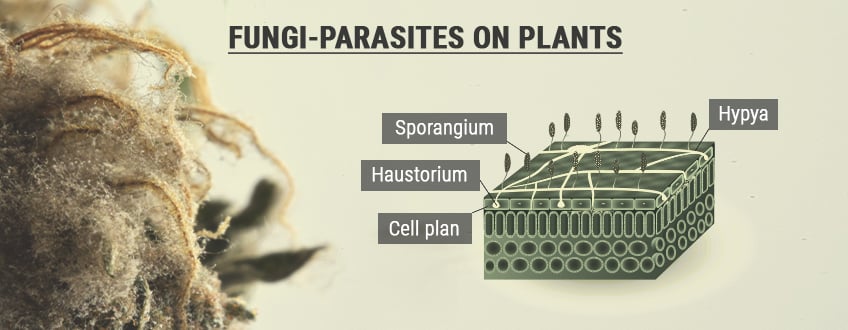
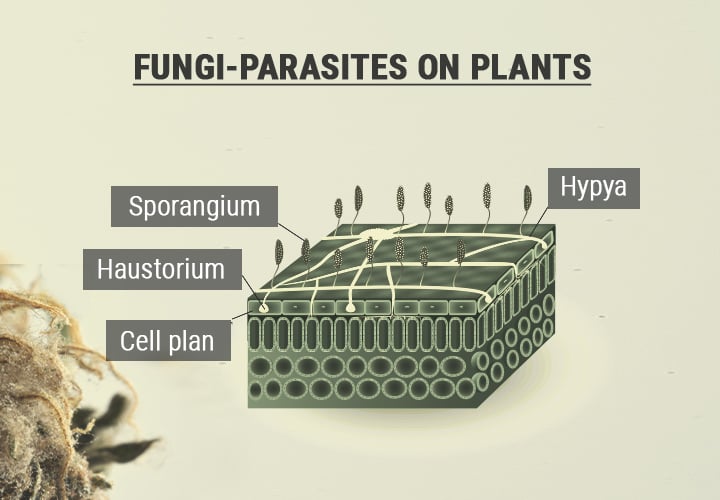
Causes of Mould
As we’ve mentioned before, mould will only start to infest, decompose, and damage cannabis plants when the conditions are just right. Mould spores exist in the air around us—and our plants—at all times.
Some species may lay dormant, only striking when the conditions autumn in their favour. Other species wait, lurking in the soil, for the chance to start feeding on susceptible root systems. Many of them, as seasoned cannabis growers discover, occupy soil that favours their existence, making them very hard to tackle.
Dangers
Although mould looks harmless—like you could clean it and forget about it—some species pose a real threat to human health.
Mould exists everywhere, to the point that all cannabis flowers will have a little (besides those cultivated in sanitised indoor spaces). Although mostly inert in small quantities, even tiny amounts of toxic mould can cause problems.
Now, most people possess a fully functional immune system capable of defending against occasional mould exposure. However, immunocompromised individuals are particularly susceptible to them, and prone to issues like lung infections when exposed to mould.
Common Types of Mould
While we’d like to only have to worry about one type, various species of mould could attack your cannabis plants. To ensure your crops stay safe, you and all other cannabis growers should get familiar with these common cannabis moulds. Even a basic knowledge of the traits, signs, and symptoms of these moulds will help growers prevent them, and treat them if they arise.
Botrytis (Bud Rot)
Botrytis, also known as grey mould, often enters plants through wounds and openings, although healthy specimens are also vulnerable.
Botrytis spreads through airborne transmission, and its spores are almost always present in the air. An open wound, or certain other conditions, will allow the spores to proliferate, potentially infecting entire plants and their neighbours.
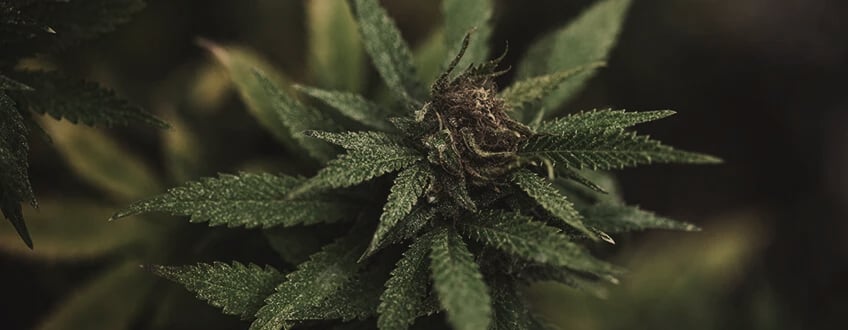
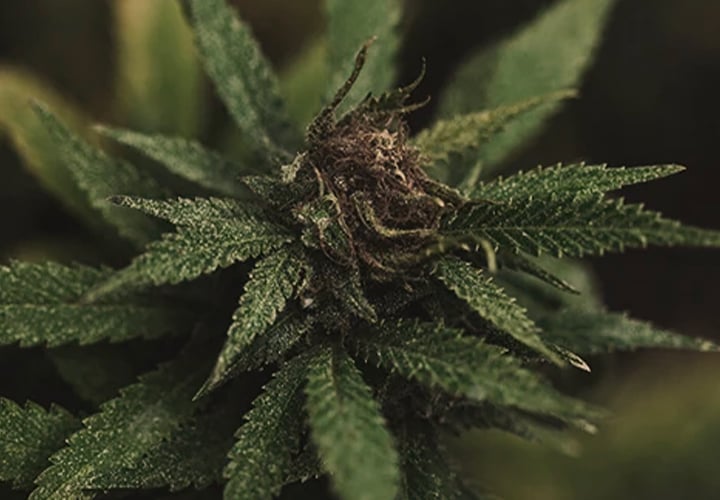
Symptoms:
- Small black dots begin to form on infected structures.
- Large fuzzy grey patches begin to form.
- Above-ground plant parts, such as buds and leaves, begin to shrivel, turn brown, and die.
- Leaf tips turn from green to yellow to brown as it progresses.
- Botrytis grows rapidly in humid environments.
Causes:
- Damage that causes susceptible open wounds.
- Cool and humid conditions enable spread, mostly in spring and autumn.
- May occur as a result of poor storage conditions.
Prevention:
- Keep growing tools clean, especially before defoliation and pruning.
- Control indoor and greenhouse humidity levels using fans and humidity sensors.
Treatment:
- Prune visibly infected parts.
- Remove infected parts from the garden/property, and burn or bury them.
- Sterilise pruning tools after treatment.
- Equip the growing area with a fan, hygrometer, and sensor to prevent the humidity levels from reaching dangerous levels.
Powdery Mildew
While they’re all referred to by one name, there are actually many types of powdery mildew. Whatever the species, though, they often occur on the foliage of cannabis plants, creating a fine dust-like layer of spores. The infection first looks like small islands of hyphae, eventually building into large patches that dominate the lower leaves.
The mycelium spreads over time, making contact with the branches, stems, and even the flowers. Then, in the advanced stages of infection, the mycelium starts to produce spores on the most compromised leaves.
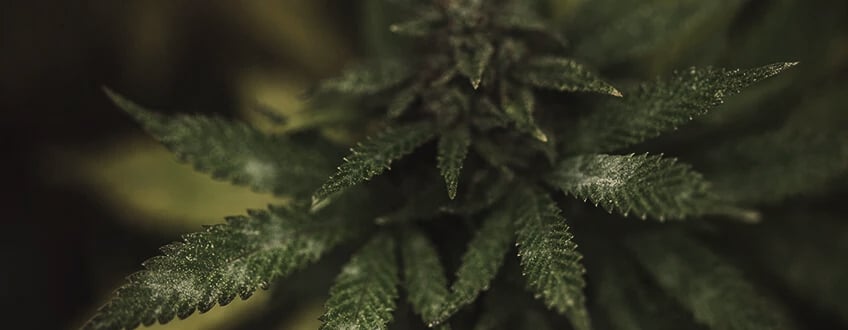
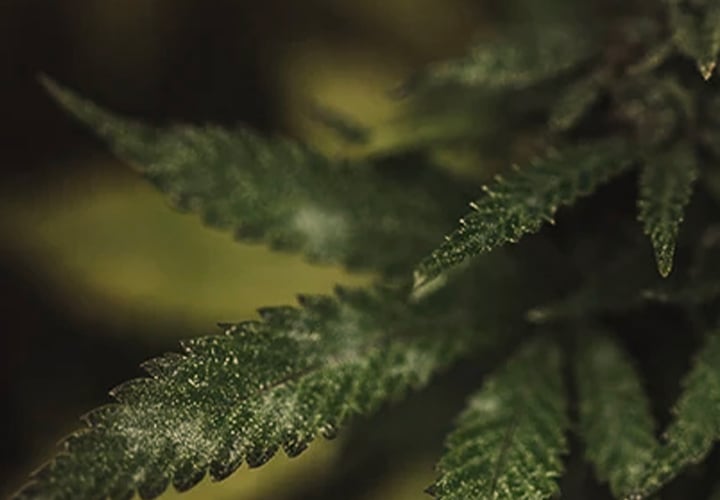
Symptoms:
- White, powdery patches of mycelium start to form on the fan leaves.
- Growth is stunted and leaves become distorted.
- Plant tissue becomes discoloured.
- Newer leaves and flowers appear infected.
Causes:
- Environmental factors allow spores to germinate and hyphae to begin infecting plants.
- Powdery mildew thrives in high humidity and warm temperatures. Greenhouses, for example, provide the perfect environment for infection.
Prevention:
- Keep enough space between plants to prevent contact between them, which can enhance mildew transmission.
- Keep your grow room or greenhouse well-ventilated to keep humidity down.
- Use a dehumidifier if you’re growing in a particularly moisture-rich environment.
- Plant outdoors in the full light of the sun, if possible.
- Provide good soil drainage, and avoid overhead watering.
Treatment:
- Wipe down infected leaves with a wet paper towel.
- Use neem oil foliar spray.
Sooty Mould
Sooty mould, named after its dark and flaky appearance, doesn’t actually directly attack cannabis plants. Instead, it gobbles up the excrement from sap-sucking insects.
Because of the mould’s eating habits, pest infestations usually set the stage for an appearance. Insects like aphids, leafhoppers, and whiteflies are an especially good indicator, since they excrete a particular substance called honeydew. It will attract sooty mould without fail, and a steady supply will allow it to take hold.
Thankfully, it’s easy to identify, since it literally takes on the appearance of soot. Small black patches will spread until they dominate the surfaces of fan leaves, disrupting photosynthesis and impeding plant growth. Just as they can be quickly identified, sooty mould infections can also be treated and prevented in no time.
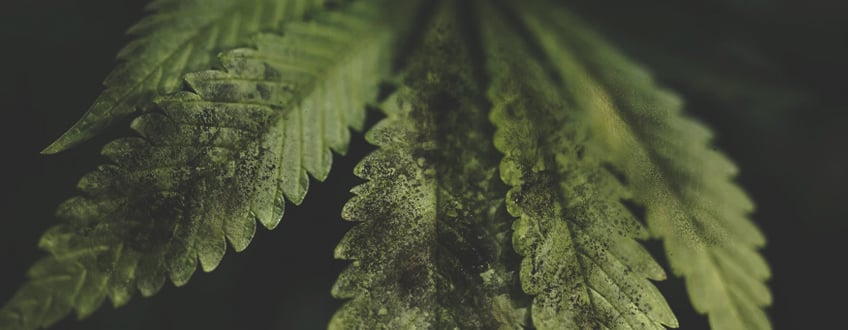
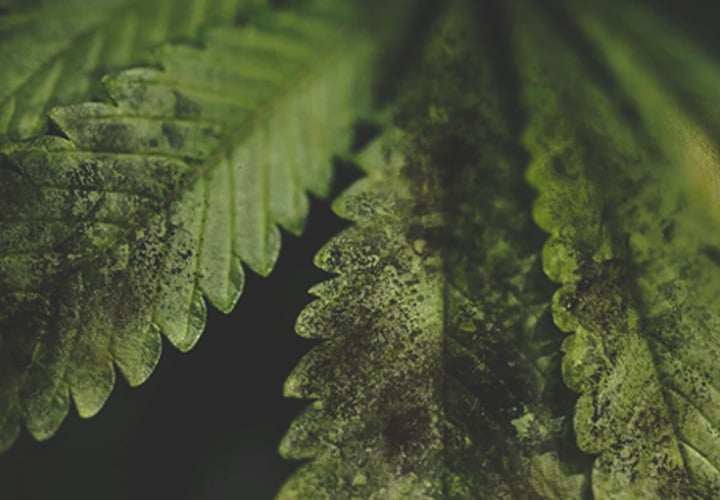
Fusarium
A particularly devastating fungus, Fusarium can potentially lay waste to an entire cannabis crop. The species can lay dormant for years before becoming active and obvious—making it considerably harder to detect than many others.
When it strikes, it does so with ferocity. The pathogen first attacks the roots, causing them to rot. Eventually, the root system loses the ability to send nutrients and water to the plant, resulting in visible wilting. Growers are left with few options when Fusarium sets in. Therefore, taking preventative measures remains absolutely key.
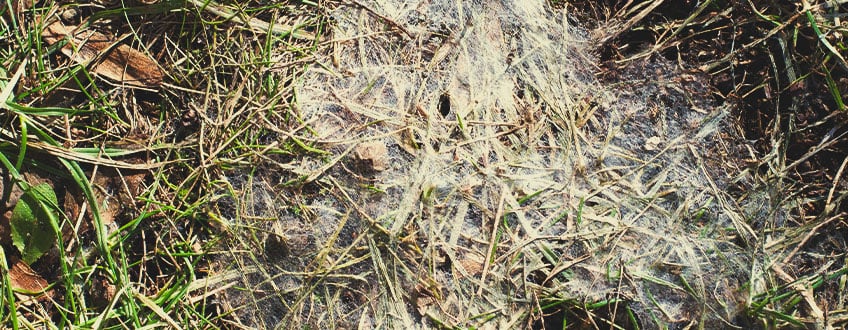
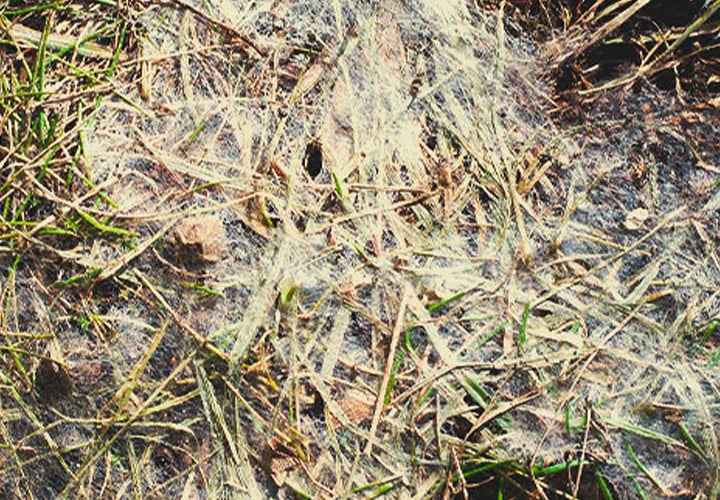
Mould in Soil
Without a microscope and an in-depth knowledge of microbiology, it’s difficult to tell exactly what lifeforms are living in your soil. Fortunately, growers can take measures to reduce the presence of parasitic fungi and microbes regardless.
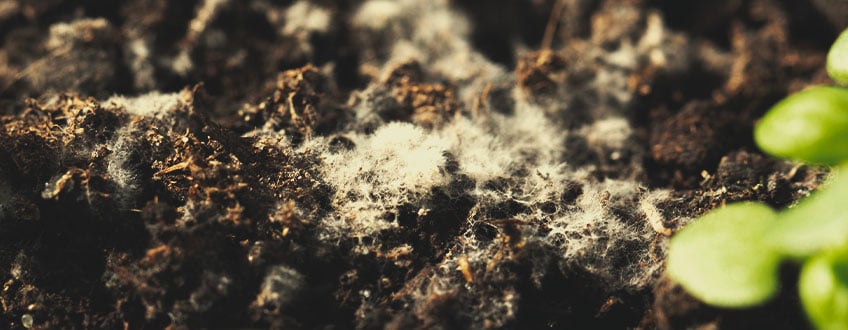
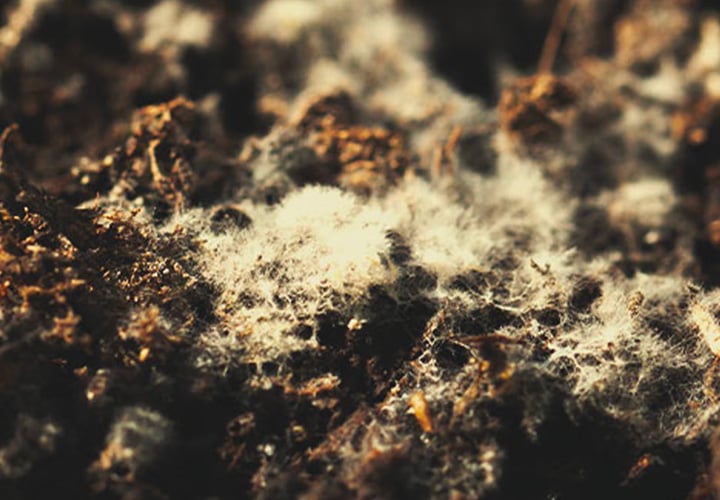
These strategies include:
- Bacillus subtilis inoculation: This soil-dwelling species of bacteria possesses antifungal properties, and puts up a fight against Botrytis and powdery mildew.
- Copper: Cannabis needs this micronutrient to fulfil several important physiological functions. It can also help to keep damaging moulds at bay thanks to its fungicidal properties.
- Gliocladium: This beneficial fungus acts as a parasite, and produces toxic compounds that are detrimental to harmful fungal species.
- Trichoderma: This handy fungus patrols the soil, and can inhibit diseases caused by Fusarium.
When Mould Usually Appears
Ever-present fungal spores make heart-wrenching appearances when the environment matches their preferences. It’s also important to note that mould infections can occur at any point along the cannabis growing timeline.
Vegetative Phase
The vegetative phase begins when seedlings mature and flowering begins. It involves swift growth and the development of fan leaves—the photosynthesis powerhouses of cannabis.
Powdery mildew usually appears when plants start to get bigger and develop large, broad leaves (their ideal home). Plants grown in densely packed grow rooms, along with those in compact greenhouses, are more susceptible than most.
During this time, growers must ensure low humidity levels, and do everything they can to promote adequate airflow and ventilation. Not only will circulation reduce moisture, but it will help keep floating spores from landing on plants.
Flowering Phase
The flowering phase begins around the three-week mark in autoflowering strains, and whenever the light cycle shifts to around 12/12 in photoperiod varieties (or the seasons change outdoors). Unlike fan leaves, mature flowers are dense, sticky, and feature pockets of stagnant air, making them prime territory for mould.
Specifically, in a suboptimal environment, cannabis flowers provide an ideal microenvironment for both bud rot and powdery mildew. However, the strategy for treatment and prevention is unwavering: reduce humidity and keep the air fresh.
Also, make sure to water your plants from the base of the stem, directly into the soil. Watering from above will only satisfy the conditions that these mould species need to proliferate.
Curing
Curing takes place after harvesting and drying cannabis flowers. Typically carried out in glass jars, the process helps buds stay fresh, improving their flavour and smoothness. Even in these seemingly safe conditions, however, you can’t let your guard down against mould. After all, not much will break a grower’s heart more than an infestation right at the finish line.
To prevent disaster, cultivators need to ensure they follow curing processes that properly dry buds, preventing mould from popping up. If you can, place a hygrometer in your curing jar to monitor humidity levels, “burp” your jars daily (open them up to let in fresh air), and check your buds to rule out fungal growth.
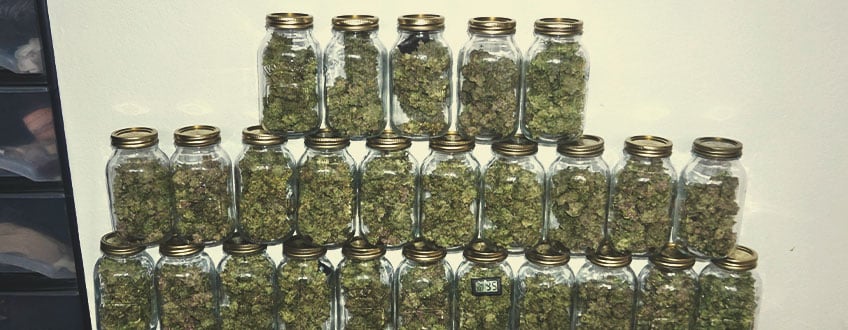
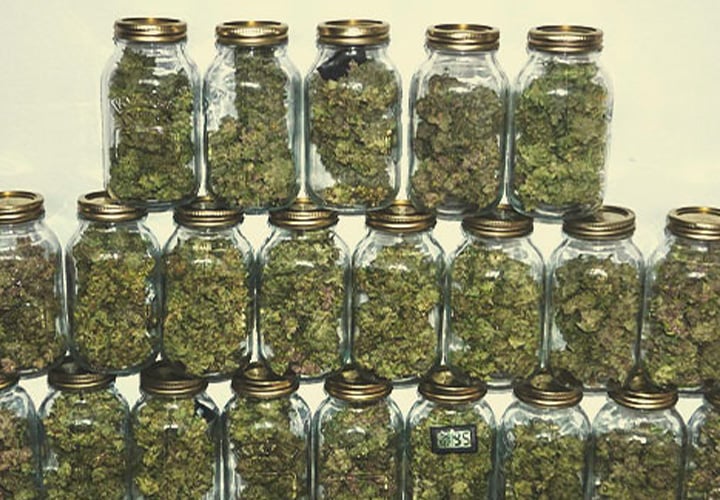
How to Prevent Mould
Of course, prevention is better than cure. Here are some easy and effective ways to make sure mould doesn’t develop a foothold in your cannabis grow.
Indoors
Indoor growers have the luxury of controlling almost every aspect of their growing environment. Use the following tips to keep your plants mould-free.
- Place a hygrometer in your grow space to monitor temperature and humidity.
- Set up a fan and exhaust to keep air moving freely.
- Instal a dehumidifier if moisture levels get too high.
- Inspect plants daily for signs of disease.
- Maintain a temperature of around 24°C where possible.
- Defoliate plants during the late vegetative phase to increase airflow in the canopy.
- Grow strains known for withstanding mould.
Outdoors
Outdoor growers have much less control over their growing environment. As you’re subject to the elements, things can get a little more challenging. It’s not impossible, though! Use these strategies to minimise the chances of a fungal infestation.
- Raise plants in the full light of the sun, if/when possible.
- Plant in portable containers that can be moved to safety during poor weather conditions.
- Erect temporary tarps during prolonged rainy periods.
- Instal fans and ventilation in greenhouses.
- Space out plants so they aren’t touching.
- Inoculate beds and containers with Trichoderma to reduce Fusarium risk.
- Select genetics that are known to resist fungal infections.



























